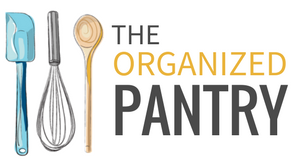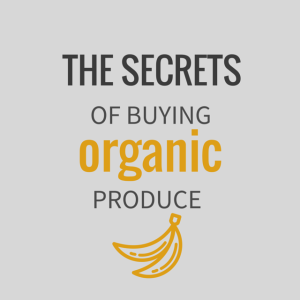Organic produce can seem a bit confusing…and expensive!
Learn all about the Dirty Dozen and the Clean Fifteen below.
I’ll show you which fruits and vegetables you should be buying organic and which ones don’t matter as much.
An (organic) apple a day…
One part of clean eating is choosing organic fruits and veggies whenever possible. “But organic is so expensive!!” you say. Yup, it can be. So let me share a secret with you today.
It’s less important how much money you spend on organic produce and more important which specific fruits and vegetables you buy organically.
Heard of the dirty dozen? Some fruits and vegetables have a lot more pesticide residue than others. The Environmental Working Group (an American environmental organization) tests 48 different kinds of fruits and vegetables for pesticide residue. From that, they’ve ranked them from most contaminated to least contaminated.
The top results are grouped into “The Dirty Dozen”- these are the most pesticide-contaminated fruits and vegetables. Logically these are the ones that would be the most advantageous to buy organic.
So, if you want to start buying organic produce and also want to watch your wallet, focus on buying the following fruits and vegetables in the organic section:
The Dirty Dozen:
Apples
Strawberries
Grapes
Celery
Peaches
Spinach
Sweet bell peppers
Nectarines (imported)
Cucumbers
Cherry tomatoes
Snap peas (imported)
Potatoes
Note that I’ve listed them from worst to best, so if you are only going to buy one thing in the organic section, make it apples.
Now for some good news! I also have a nifty list to share with you of all the produce that is least contaminated with pesticides:
The Clean 15
Avocado
Sweet Corn
Pineapples
Cabbage
Sweet peas- frozen
Onions
Asparagus
Mangoes
Papaya
Kiwi
Eggplant
Grapefruit
Cantaloupe
Cauliflower
Sweet potatoes
Obviously, in an ideal world it would be great to have access to pesticide-free versions of all our favorite fruits and vegetables and the budget to afford them. As a next-best plan, try using the “dirty dozen” and “the clean fifteen” lists.
TIP: Wondering if an item is organic or not? One way to check is to look at the little sticker found on most produce- if there are 4 numbers, it is regular produce (ie #4060). If there are 5 numbers, it is either organic produce (starts with a nine: #94060) or genetically modified (starts with an eight: #84060).
Note: I am not an expert on organic versus non-organic produce. My “dirty dozen” and “clean fifteen” lists are based on EWG’s 2014 list (you can read it here). There are undoubtedly other lists to reference that may differ slightly. The focus is on buying foods that have higher pesticide-residue in the organic section and worry less about the ones that are consistently clean.


I didn’t realize apples were on the “dirty dozen” list! For a large part of the year we have our own home grown organic apples, but then I buy the rest of the year. Need to make certain they are organic!
LikeLike
Ooooo….your own home grown apples! That sounds amazing. I also was shocked to learn that apples were at the very top of the dirty dozen list. I’m in a small town but there are plenty of organic apple options at the grocery store– phew!
LikeLike